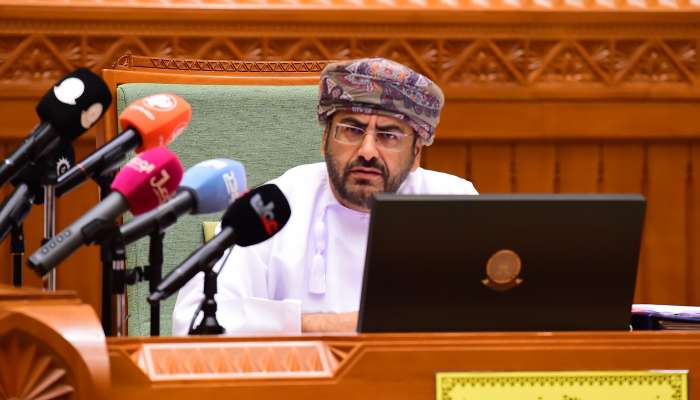
Muscat: The Shura Council on Wednesday hosted Dr. Said Mohammed Al Saqri, Minister of Economy, who delivered a statement about developments experienced by Oman’s economy over the past period and its future outlook.
The briefing took place during the Council’s 5th regular session of its Tenth Term’s first annual convening.
During the session, Al Saqri focused on three main topics: Evaluating the economic diversification process until the middle of the current five year plan; Evaluating the microeconomic performance until the middle of the current five-year plan; and the role of the Ministry of Economy in addressing regional and international economic developments.
He stressed that economic and financial indicators affirm that the Omani economy has passed recovery stage (from pandemic) to the stage of growth. It posted remarkable growth rates, thanks to the sound policies and the improvement of oil prices.
He explained that, over the past period 2021-2023 of the current Five-Year Plan, the economy saw rapid developments evidenced by a rise in oil prices over the first two years (2.6 percent and 9.6 percent, respectively), while outlook for the rest of the Tenth Five-Year Plan remained positive.
The minister pointed out that the proactive government measures contributed to protecting the Omani economy from inflation and keeping it within safe limits, despite the significant rise in global inflation rates that averaged about 6 percent in 2023. The inflation rate in Oman did not exceed one percent, he added.
This, he observed, was a direct outcome of policies taken to limit the rise in prices—like stabilising the price of fuel in tandem with October 2021 prices as a maximum limit, in addition to increasing the number of goods exempt from the value-added tax.
The minister said that the plan focused on increasing the number of Omanis working in the private sector, both through training and education of youth and by devising flexible employment terms.
The minister said that the total number of Omanis who received jobs during 2021 grew to 21,062, and in the second year of the plan, the number also grew to 28,029 workers, exceeding the annual target estimated in the plan.
The first and second years of the plan saw a rise in spending on the developmental budget, as the actual spending in the 2021 budget stood at about OMR1,192.0 million, while in the 2022 budget the actual spending stood at about OMR1,306 million.
It is expected that the actual volume of spending on the developmental budget in 2023 is set to stand at about OMR1,200 million. This reflects a keenness to provide financial resources to serve economic and social development projects and other priorities.
Al Saqri explained that the Ministry of Economy is working side by side with various government departments to improve the performance of the Sultanate of Oman in international indices, by emphasising two approaches; namely raising the performance of the Sultanate of Oman in international indicators quoted in the Oman Vision 2040 document, and monitoring improvement in sustainable development goals 2030.
To better prepare for the 11th Five Year Plan (2026-2030), the Ministry is monitoring a number of variables with which it will deal over the forthcoming period, said the minister.
He explained that the Ministry lays emphasis on economic developments in the global geopolitical arena; trends in the field of energy; the growing interest in environmental sustainability (zero neutrality, green hydrogen); integration with technological developments; artificial intelligence; environmental challenges; and climate change.
The minister stressed that the Ministry of Economy keeps monitoring global economic variables and their impacts on the Omani economy. It takes careful measures to ensure the application of sound economic policies that are capable of dealing with all global variables, including measures to achieve competitive, diversified, sustainable and comprehensive economic growth by analysing present realities and anticipating future developments.